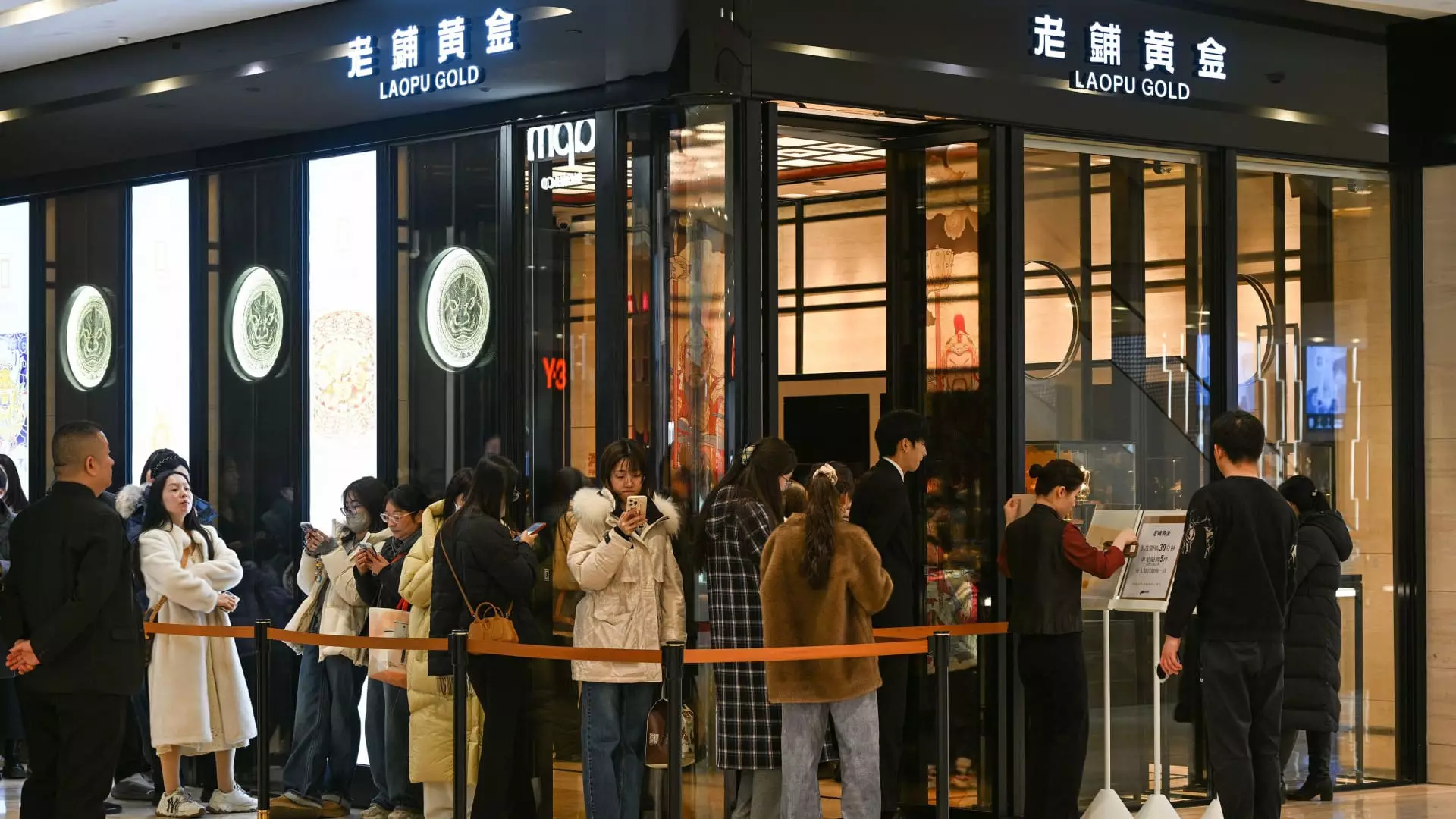Recent earnings reports from major Chinese corporations like Alibaba and JD.com are painting a picture of rising consumer spending, instilling a sense of cautious optimism. This does not, however, signify a triumphant return to pre-pandemic normalcy. Reports suggest growth, albeit sluggish, with JD.com noting a notable 15.8% increase in sales for electronics and home appliances in the last quarter of 2024. Despite this, overall growth remains muted, underlining that economic recovery, while in motion, is fraught with concerns about its sustainability.
Charlie Chen of China Renaissance Securities has aptly described the situation as a “healthy recovery, but not yet high.” This statement resonates deeply with the public sentiment, showcasing a collective awareness of the challenges still looming. It seems we are all being urged to maintain a sense of hope while navigating the harsh realities of a consumer market that still reflects vulnerability and insecurity.
Consumer Confidence: The Unseen Ghosts
One glaring issue mentioned by Chen is the weak consumer confidence, largely influenced by the ongoing real estate slump which has left many feeling financially unstable. It’s essential to recognize that consumer spending plays a pivotal role in any economy, particularly in a nation as vast and complex as China. The necessity for a “double-digit recovery” lies not just in the numbers, but in the psyche of the consumers. For many, the specter of financial uncertainty looms large, inhibiting their ability to freely engage in spending.
To combat this malaise, the Chinese government has prioritized stimulating consumption. Programs such as trade-in subsidies for various goods are being used as a band-aid solution. This dependence on government initiatives serves as a cautionary tale; the reliance on such measures raises questions about the organic nature of recovery. Are we truly witnessing a revival, or are we merely experiencing a temporary uplift fueled by short-term incentives?
Niche Success Amidst a Sea of Struggles
While many giants like Tencent and JD.com report underwhelming growth figures, a select few companies are finding lucrative niches. For instance, Laopu Gold, a producer of intricately designed jewelry, has boasted an astounding projected profit surge of 236%. Such success stories serve as bright spots within a largely subdued narrative; however, they also highlight an essential truth: consumer spending is often uneven and unpredictable.
Similarly, companies like Pop Mart and Niu Technologies have managed to carve out bottomless wells of demand through innovation and strategic branding. Their success stands in stark contrast to the many other retail enterprises grappling with declining sales and increased competition. It’s evident that the current consumer landscape rewards uniqueness and differentiation, making the competition fiercer than ever.
Travel and Discretionary Spending: A Sliver of Hope
On a slightly more positive note, travel and discretionary spending appear to be recovering, especially with companies like Trip.com reporting significant growth in revenues, particularly from international travel. This signals that while the domestic consumer might be hanging back in their expenditures, the urge to explore and travel remains strong, spurred by pent-up demand from years of lockdowns. The so-called “silver generation” is emerging as a valuable demographic, presenting both opportunities and challenges for businesses aiming to capture their needs.
However, this burgeoning sector is not without its pitfalls. The heavy reliance on this segment also leads to concerns about saturation and competition. With travelers’ needs in constant flux, businesses must adapt dynamically, making the fine line between success and failure even thinner.
A Brewing Storm for Retail Giants
The broader retail landscape continues to feel the weight of economic anxiety, with notable declines in same-store sales reported by various big names. Even established chains like Starbucks and Luckin Coffee are seeing reduced sales—a stark reminder that even titans of the industry are not immune to shifting consumer sentiments amid economic turbulence.
Price wars initiated by electric vehicle companies and aggressive online discounting from e-commerce players have compounded the challenges for traditional retailers. This points to a critical juncture for many companies: adapt or risk being left behind. The landscape may offer glimpses of recovery and opportunity, but it also harbors the looming threats of increased competition and copious economic uncertainty.
In sum, while the signs of recovery in China’s consumer market are present, they come with caveats that cannot be ignored. The trends evidenced in consumer behavior and spending patterns suggest a complex reality, laden with both promise and perils. As China navigates this fraught terrain, it’s clear that any optimism should be tempered with an awareness of the underlying factors that remain contentious and unresolved.

Leave a Reply